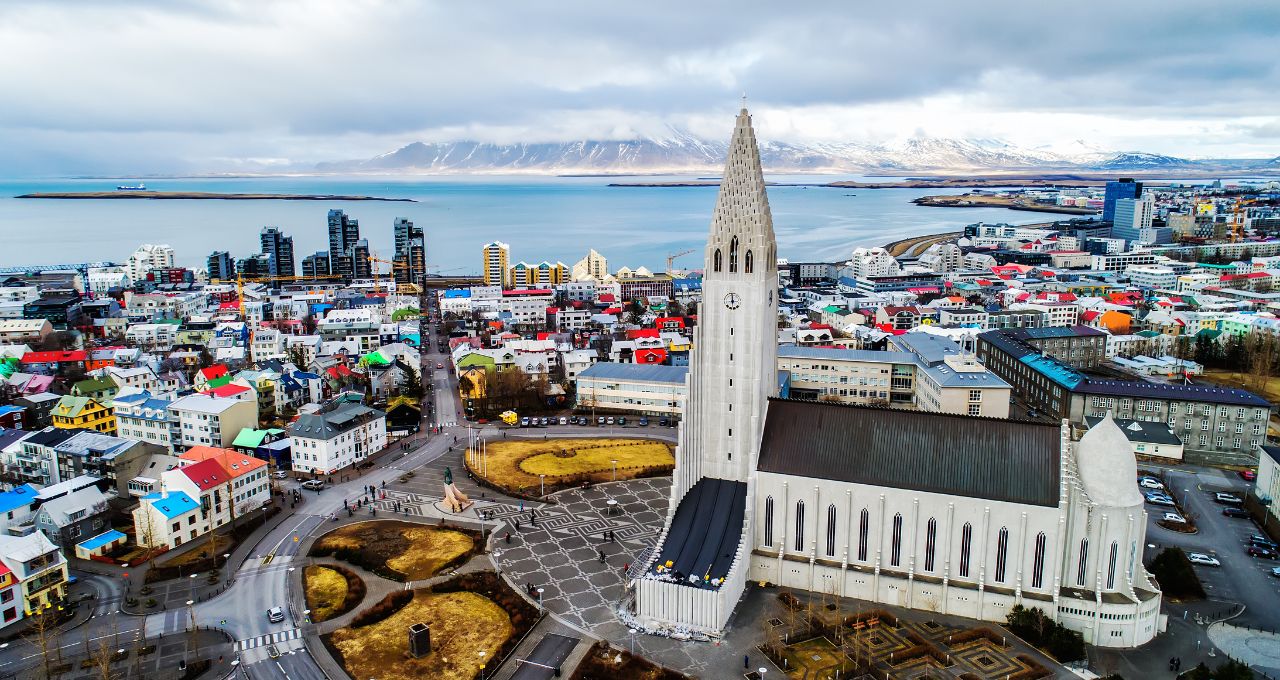Original content owned & copyrighted by Green Global Travel.
Iceland (a.k.a. the land of fire and ice) is often described as dramatic, thrilling, and otherworldly, with natural wonders shaped by unrelenting forces.
But there’s more to this fascinating island than its innate beauty. Icelandic culture remains rich and varied, with friendly people, intriguing traditions, fun festivals, and fascinating traditional food.
Whether you want to enjoy a lunch at a family farm, dance until the sun goes down at midnight, or admire the beauty of the majestic horses, there is no better place than Iceland.
Here’s a window into this Nordic nation that has been repeatedly ranked high among the safest, happiest places on Earth.
READ MORE: Birds of Iceland: An Introductory Guide
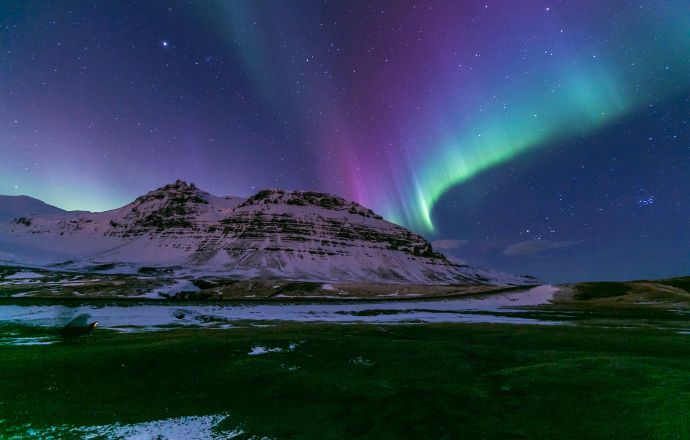
ICELANDIC CULTURE GUIDE
- Icelandic People & Their Origins
- Icelandic Cultural Traditions & Holidays
- Icelandic Clothing
- Icelandic Cuisine
- Icelandic Cultural Festivals
- Equal Pay for Women in Iceland
- Icelandic Horses
- Whales In Iceland

ICELANDIC PEOPLE & THEIR ORIGINS
This remote island in the vast North Atlantic Ocean was first discovered during the Viking era of exploration, and settled by Norse and Celtic seafarers in the 9th century.
The dominant language of the time was Old Norse, which has evolved into modern Icelandic. People today can still read folk tales in Old Norse, which tell stories ripe with Norse Gods, Viking Mythology, ghosts, elves, and trolls.
Iceland’s economic success historically depended on generations of fishermen braving the unknown, first in row boats and then on large fishing vessels, starting in the late 19th Century.
Fish have been the country’s main lifeline, both as the main food supply and chief export product.
In the early 1900s, the Herring Boom began in the small fishing town of Siglufjördur, which is located in a narrow fjord on the northern coast.
Tens of thousands of laborers flocked to Iceland, and thus began one of the most successful fishing industries in the country.
At the Herring Era Museum (a former winner of the European Museum of the Year), you can revisit life in the fishing town through artifacts restored by local artists, architects, and volunteers, and wander along a dock restored to 1950s fishing village charm with old vessels.
Away from the shores, the large swaths of land are sparsely populated and are often used for livestock farming.
The majority of the population of 340,000 people live in the major cities of Reykjavik, Kopavogur, Hafnarfjordur, and Akureyri.
Three-fourths of the population belong to the Evangelical Lutheran Church, although they have freedom of religion.
The country is progressive, modern, and often ranks at the top for quality of life and happiness.
Even better, it’s considered one of the greenest countries on the planet, thanks to its emphasis on geothermal energy and sustainable fishing practices.
READ MORE: The 10 Best Iceland Waterfalls (Planning the Perfect Road Trip)
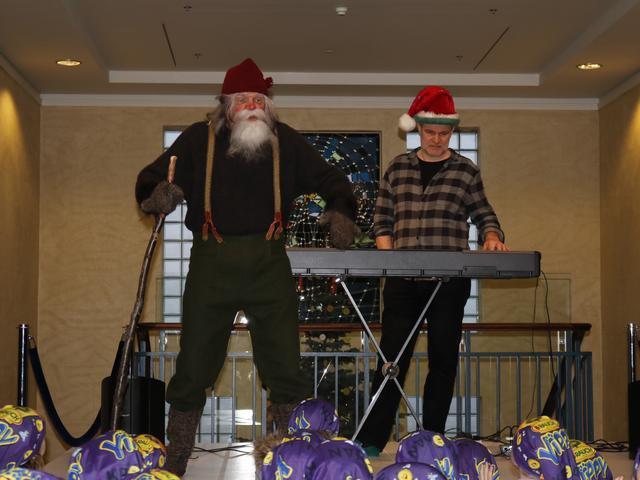
ICELANDIC CULTURAL TRADITIONS & HOLIDAYS
If you’re visiting Iceland in December, you’ll find an enchanting experience full of festive feasts, colorful decorations, and not one, but 13 Santas!
According to Icelandic folk traditions, these Yule Lads (as they are called) are descended from trolls. They were originally considered to be mischievous, stealing from villagers and playing tricks.
But nowadays they are believed to come down from the mountains one by one, from December 12th until Christmas Eve, in order to bring the children gifts.
While the rest of the world only has one day for celebrating love, Icelanders have two. Husband’s Day is celebrated on the first day of Thorri (an ancient Norse month), which falls in January, and Wife’s Day is on the last day of Thorri.
On both days, spouses treat their beloveds with good food, gifts, and something romantic.
Iceland became an independent nation from Denmark in 1944, and every year the 17th of June is celebrated with parades throughout the country showcasing horses, bands, and street theatre.
Speeches are given and usually include a poetry recital by Fjallkona, a traditional living symbol of the country, who is also known as the Lady of the Mountain.
In 2018, Fjallkona was played by famed drag queen Gógó Starr, who led the official Independence Day parade through Reykjavík.
The Bank Holiday Weekend, which is also known as Verslunarmannahelgi, happens during the first weekend in August, ending on a Monday.
People celebrate with family and friends at outdoor festivals involving camping, live music, and fireworks. The biggest outdoor event takes place in Vestmannaeyjar and features fun for the adults as well as kid-friendly events and sports activities for teens.
READ MORE: 80 Christmas Traditions Around the World (With Fun Christmas Facts)
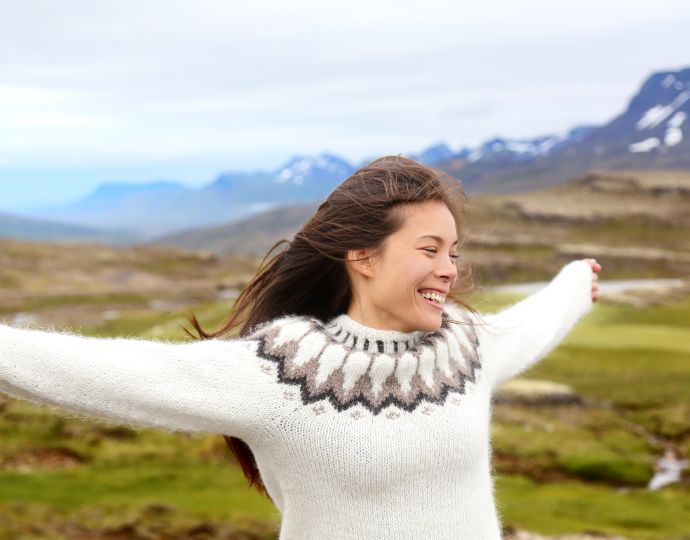
ICELANDIC CLOTHING
It’s common to find the iconic wool sweater called lopapeysa (literally translating to yarn sweater) at almost every clothing store in Iceland.
It’s a defining piece of Icelandic clothing, with a distinctive pattern of wide decorative circles fanning out from the neck opening.
It had its beginnings as everyday wear by farmers braving the harsh elements in the dead of winter. It’s stylish, rugged, and good for pretty much any wintery outing.
But most Icelanders today wear modern, Western-style clothing and leave traditional costumes for special occasions.
The women traditionally wear a white blouse with an ankle-length black skirt, adorned with a black embroidered vest laced in the front, along with a white apron, black shoes, and a black cap.
READ MORE:
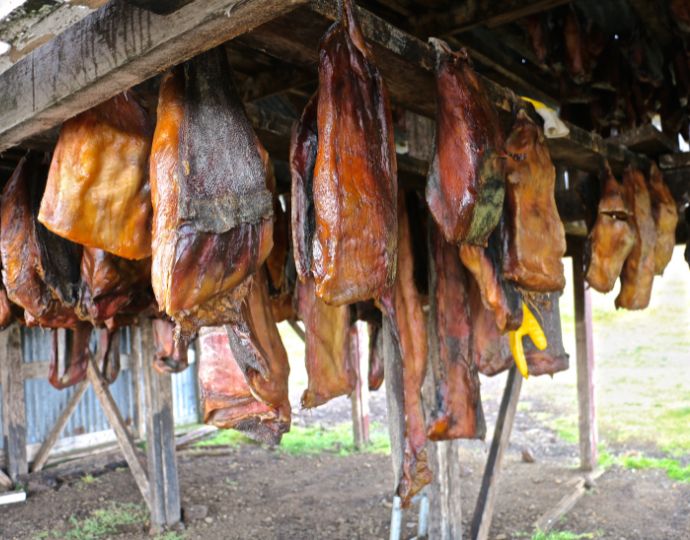
ICELANDIC CUISINE
Given the cold climate and isolation of the region, Icelandic cuisine has evolved to include food that has been fermented.
Originally, fishermen would catch the Greenland shark (which is fairly common in the freezing waters that surround the island), bury it in the ground, and then urinate on it before letting it ferment for months.
While this particular tradition isn’t widely followed today, dried shark is still consumed in Iceland.
In Ektafiskur, a cod fishing and processing company on the Northern coast, those brave enough can attempt to become card-carrying members of “The Rotten Shark Club of Hauganes” by sampling fermented Greenland shark.
More popular and palatable foods include skyr (a creamy dairy product), hangikjöt (smoked lamb), and kleinur (donuts).
Traditional Icelandic dishes include pickled ram’s testicles and sheep’s head, blood pudding, and liver sausage.
Of course, due to the pure shorelines and rivers, there’s also plenty of Harðfiskur (fish jerky) to go around, if you don’t want to eat fermented shark. The jerky is typically consumed with a generous spread of delicious Icelandic butter.
Icelanders use all types of dipping sauces, gravy, and condiments to spread on meat, vegetables, pizza, fries, hamburgers, and chips.
And regardless of the time of the year and weather, if you’re visiting a family, expect to have hamburgers and kebabs grilled over coals and then slathered with sauce.
There are sauces for ice cream as well, from luxury chocolate to licorice, and it’s consumed year-round.
It might come as a surprise to many, but beer was banned in Iceland from 1915 until 1989.
The end of the prohibition is celebrated annually on March 1st, the official Beer Day, where everyone gathers around local bars and pop-up events to taste special brews and other gourmet products.
Iceland’s national drink of choice is Brennivín, a schnapps distilled from potato mash and caraway seeds that is produced only in Iceland.
The drink, which is sometimes called “black death,” is mixed with Coke or coffee, and is consumed during special occasions. It’s especially effective for washing down the taste of the putrefied-shark dish.
READ MORE: How to Avoid Products with Palm Oil

ICELANDIC CULTURAL FESTIVALS
Icelandic people love to celebrate and usually get together with family and friends on every special day and change in the season. Ancient Norse and Christian traditions are commemorated along with international holidays such as Labor Day.
In January and February (during the Nordic week of Thorri) Icelanders have a Thorrablot feast of traditional delicacies, in honor of Thor, the God of Thunder, to ensure the return of summer.
A few weeks later, the popular Bolludagur (or Bun Day) takes place. Traditional cream puffs– the “buns”– are served in restaurants and homes, and are sold in almost every bakery around the country.
The bun is filled with whipped cream and jam, with chocolate on top. Children are encouraged to smack their parents with wands made in school during the morning of Bun Day and yell “bolla, bolla, bolla” (bun, bun, bun).
They earn a bun for each spank. You can only imagine the fun Icelandic kids have with this tradition!
In the second weekend of June, the five-day Viking Festival in Hafnarfjörður (a neighboring town of Reykjavík) showcases famous Vikings in history and Viking culture with traditional cuisine, archery, handcrafts, games, and music.
Exciting battle reenactments serve to truly engage the crowds and give a sense how ancient adventurers such as Erik the Red lived.
As the first day of summer arrives and the sun begins to set around midnight, Icelanders celebrate the Summer solstice with a music festival.
The land that gave the world Björk puts on the massive Secret Solstice festival, with a lineup of top-notch national and international musicians in Reykjavik, where the city delights in 96 straight hours of sunshine.
READ MORE: The 20 Best Cultural Festivals Around the World
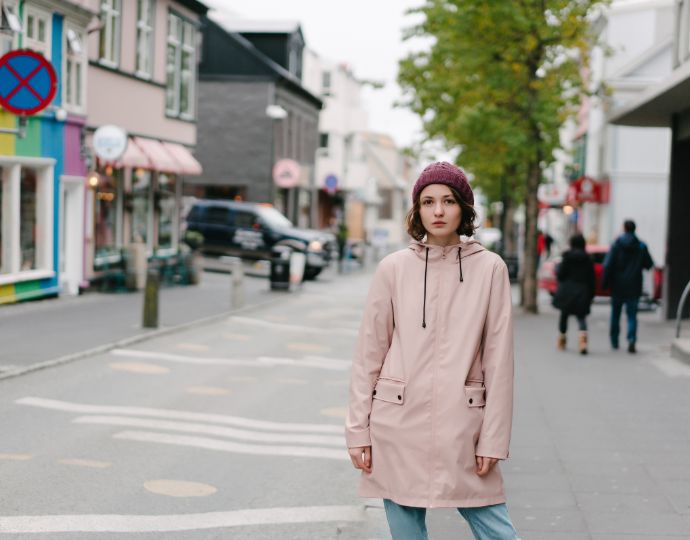
EQUAL PAY FOR WOMEN IN ICELAND
In the autumn of 1975, the women of Iceland walked out of their homes and jobs and refused to work until they were given equal pay.
Their strike attracted 25,000 people to protest in Reykjavik, and ultimately led to a subsequent victory that transformed the role of women in society.
Women’s “Day Off” happened again in 1985, 2005, 2010, and 2016, and a nationwide equal pay policy was legalized in early 2018. Today, Iceland ranks #1 in the entire world in terms of gender equality.
Companies with more than 25 employees are required to pay men and women equally. The government expects to eradicate the gender gap completely by 2022, which is an inspiring goal that hopefully other countries will adopt.
Emmy award-winning director Pamela Hogan spent a significant amount of time interviewing two of the original protestors, Elisabet Gunnarsdóttir and Guōrún Hallgrimsdóttir, for her documentary, The Long Friday.
The documentary tells the untold story of ordinary women doing extraordinary things.
READ MORE: Top 15 Female Wildlife Conservationists & Animal Rights Activits
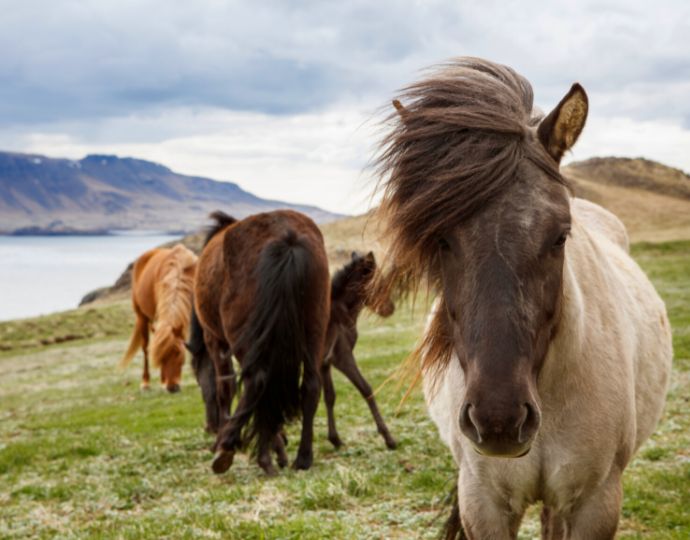
ICELANDIC HORSES
With their vibrant manes, thick coats, striking eyes, and five distinctive gaits, the Icelandic horse is as iconic as the country’s volcanoes.
Coming in an array of brown, black, bay, and chestnut hues, these sure-footed animals hold a special place in the people’s hearts.
If you ever have the privilege of getting up close to them, you can experience their curiosity and intelligence for yourself. The first ponies were brought to Iceland by Viking ships, as their short, sturdy stature made them ideal for overseas traveling.
These horses are capable of enduring high winds, snowstorms, and even wading glacial rivers. Because importation of other horse breeds has been prohibited, the Icelandic horse has been kept in isolation and remains one of the purest breeds in the world.
So the next time you’re near one of these gentle beasts– perhaps on your journey around Iceland’s famous Ring Road– know that you are in the presence of an incredibly cool animal that’s found nowhere else in the world.
Just be wary not to get too close, as the curious ones are known to be eager to examine your boots and clothing. And be sure not to feed them, as they have plenty of food, and adding anything new to their diet could be dangerous to their health.
At the family-run Fridheimar Farm, which is located an hour from Reykjavik, visitors can take a tour of the greenhouse, followed by a demonstration of the majestic Icelandic horse’s beauty in action.
READ MORE: 30 Facts About the Mongolian Horse (a.k.a. Przewalski’s Horse or Takhi)
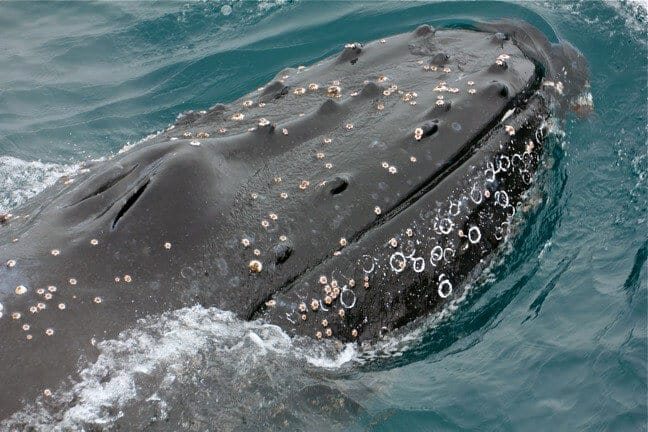
WHALES IN ICELAND
Whales have played a significant role in shaping the Icelandic culture and economy.
Whaling began in Iceland as early as the 12th century, and today Iceland remains one of the few countries to object (primarily on cultural grounds) to a moratorium on whale-hunting placed by the International Whaling Commission in 1986.
However, the majority of the Icelandic population considers commercial whaling to be of an ancient worldview, and only a fraction (less than 2%) of whale meat is consumed by locals.
A lot of the whaling vessels are now used for whale watching excursions. IceWhale, the Icelandic Whale Watching Association, hopes that commercial whaling will be completely eradicated within a few years.
You can enjoy learning about Iceland’s mighty whales at the non-profit Husavik Whale Museum.
In collaboration with the University of Iceland, the museum has recently added an educational component, with information on the different types of whales found in the area.
Around 19 species of whales have been recorded in the ocean waters off Husavik, a town in the Norðurþing municipality on the Northern coast, including minke, fin, and even the elusive blue whale.
In the summer, the excellent whale watching often includes the acrobatics of the Humpbacks as they breach, slap their tails and flukes during their annual migration, and make unforgettable memories for animal-loving adventurers. –Lavanya Sunkara
BIO: Lavanya Sunkara is a writer, animal lover, and responsible traveler based in New York City. Her love of nature and adventure has taken her all over the globe. She cherishes sharing her experiences and being a voice for the voiceless. Follow her adventures on her blog, Nature Traveler.
